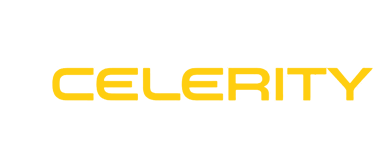A prosthetic arm, or upper limb prosthesis, is a custom-designed device that restores the function and form of a natural arm. These prostheses are used for various upper-limb amputations, ranging from hand loss to above-elbow amputations. Prosthetic arm types include two broad categories: functional and cosmetic, but there are various subtypes within these categories.
If you’re wondering how prosthetic arms work, functional prosthetic arms include body-powered models that use straps and cables controlled by movement, myoelectric models that rely on muscle signals to operate motors, and hybrid models that combine both technologies for enhanced control. Cosmetic arms are designed for appearance—they look lifelike but are not functional or intended for movement.
The Most Common Types of Prosthetic Arms
Here are the five most common prosthetic limbs used:
1. Passive Prostheses (Cosmetic)
Also referred to as cosmetic prosthetic limbs, passive prostheses are not designed for movement but closely resemble the appearance of a natural arm. Manufacturers use silicone or plastic to create these prostheses and also allow customization to match the user’s skin tone.
2. Body-Powered Prostheses (Functional)
Body-powered prostheses use a harness and cable system controlled by body movements to operate the artificial limb. They typically consist of a shoulder harness to which a cable, in turn, connects to a mechanical hand or hook. When the user moves their shoulders, chest, or upper arm, the cable forces them closer together (by contracting), allowing them to open or close the prosthetic hand or adjust its position. These prostheses are suitable for different environments (wet or dusty conditions).
3. Externally Powered Myoelectric Prostheses (Functional)
These are among the latest options operated by electrical impulses generated through your muscles. The electrodes on the prosthetic arms are positioned on the skin and recognize muscle contractions in the residual limb.
The signals are then interpreted into movement so users can open and close the hand, rotate the wrist, and execute several grip patterns.
4. Hybrid Prostheses (Functional)
Hybrid prostheses combine body-powered mechanics with myoelectric technology to produce a system equal in strength, control, and adaptability.
The elbow is usually controlled by the body-powered system, giving consistent motion, while the hand functions through myoelectric sensors, enabling a more natural grasp. This pairing is useful for above-the-elbow amputees.
5. Activity-specific Prostheses (Functional)
Activity-specific prostheses are designed for specific activities and not for general use. In contrast to conventional prosthetic arms, users can use these prostheses for activities such as sports, weightlifting, swimming, or playing a musical instrument. Instead of a traditional hand, these prostheses feature custom attachments like hooks, paddles, or tools optimized for maximum efficiency in specific activities.
Comparison of Common Prosthetic Arms
Here’s a simple comparison of common prosthetic arms. See the key features to choose the right one for you.
| Types | Features | Pros | Cons | Best For |
| Passive Prostheses | Non-functional, cosmetic only | Affordable, lightweight, and natural appearance | No movement or function | Aesthetic purposes and social confidence |
| Body-Powered Prostheses | Manual Control | Durable and affordable | Can cause strain | Active users and labor-intensive work |
| Myoelectric Prostheses | Controlled by muscle signaling | More natural movement | Expensive and needs battery charging | Daily activities and smooth motor control |
| Hybrid Prostheses | Combines body-powered and myoelectric prostheses | Balance of strength and versatility | Complex design and expensive | Users who need precision and strength |
| Activity-Specific Prostheses | Designed for specific tasks | Optimized performance | Limited usability and expensive | For specialized tasks |
Conclusion
Nowadays, several prosthetic options are available to everyone according to their specific needs. They enhance functionality and quality of life. The main types of prosthetic arms are body-powered, myoelectric, hybrid, and passive. Some prostheses are for aesthetics and are not movable, whereas others are fully functional. Consult a prosthetist to find the best prosthetic solution for your needs. For expert guidance and reliable service, contact Celerity Prosthetics for dedicated solutions and ongoing support.
